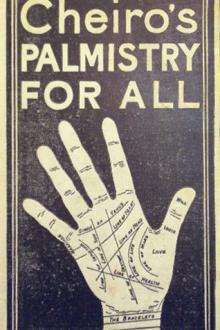The Diary - Samuel Pepys (red white and royal blue hardcover txt) 📗

- Author: Samuel Pepys
Book online «The Diary - Samuel Pepys (red white and royal blue hardcover txt) 📗». Author Samuel Pepys
Daniel Colwall, Treasurer of the Royal Society 1665–1679. ↩
Anne, daughter of Edward, first Lord Howard of Escrick, wife to Charles Howard, first Earl of Carlisle. —B. ↩
This paper, The Humble Peticõn and Addresse of Edward Earl of Clarendon, will be found in Harl. MS. No. 7170 (B. M.). It is printed in the Journals of the House of Commons, vol. ix, p. 30. It was also printed under the title, News from Dunkirk House, or Clarendon’s Farewell to England in His Seditious Address to the House of Peers, December 3rd, 1667 (Somers’s Tracts, vol. viii, p. 7). It was burnt by the hangman, December 12th, 1667. ↩
Sir William Bolton.
“Petition of Sir Wm. Bolton, alderman and late Lord Mayor of London, to the King, to call to account the Lord Mayor, etc., for their unjust proceedings in deposing him from his place as alderman, and questioning him on his accounts of the moneys raised for relief of sufferers from the fire, although that cause is depending before the Commissioners for charitable uses; this malice arises from his Majesty’s recommendation of him as Surveyor General for rebuilding the city.”
Calendar of State Papers, 1667–68, p. 416↩
King Street. Before the construction of this street the only access to the Guildhall was either by Ironmonger Lane or Lawrence Lane. ↩
This principle of melioration was included in the clauses of the Act for rebuilding London by the influence of Sir Matthew Hale. The following is an extract from the Act:
“And forasmuch as the Houses now remaining and to be rebuilt will receive more or lesse advantage in the value of their rents by the liberty of air and free recourse for Trade and other conveniences by such regulation and inlargements, it is alsoe enacted by the authoritie aforesaid that in case of refusall or incapacity as aforesaid of the owners or others interessed of or in the said Houses to agree and compound with the said Lord Maior Aldermen and Com̃ons for the same. Thereupon a jury shall and may be impanneled in manner and form aforesaid to judge and assesse upon the owners and others interessed of and in such houses such competent summe and summes of money with respect to their severall interests in consideration of such improvement and melioration as in reason and good conscience they shall think fit.”
An Act for rebuilding the Citty of London, 18 and 19 Car. II, c. 8, clause 24; Statutes of the Realm, 1819, vol. v, p. 608As the word “melioration” has an established position in law books, it seems a pity that the word “betterment” at present in use should be allowed to supersede it. ↩
“Sec. Morice to the Duke of York, Lord Admiral and Lord Warden of the Cinque Ports. The King by request of the House of Commons commands you to send orders to all seaports for diligent care to be taken that the Earl of Clarendon, who has lately withdrawn, do not escape the kingdom. Dec. 3, 1667.”
Calendar of State Papers, 1667–68, p. 59A copy of the original order for the apprehension of the Earl of Clarendon, signed by the Duke of York, and directed to Sir John Bramston, is given in The Autobiography of Sir John Bramston, p. 257 (Camden Society). ↩
Thomas Jermyn, who succeeded his uncle Henry, Earl of St. Albans, as second Lord Jermyn of St. Edmundsbury in 1683. Henry Jermyn succeeded his brother Thomas as third Lord Jermyn of St. Edmundsbury in 1703. ↩
James Compton, third Earl of Northampton, Lord Lieutenant of Warwickshire, and Constable of the Tower. Died December 15th, 1681. ↩
Sir Lewis Dyve was born November 3rd, 1599, and knighted in April, 1620. He was M.P. for Bridport 1625, 1626, and for Weymouth in 1627–28. He took an active part in support of the king during the Civil Wars, and died April 17th, 1669. ↩
See note 2944. It is affirmed in the Dictionary of National Biography that Lord Cottington’s estates passed to his nephew Francis, son of his brother Maurice, but it is distinctly stated on the monument in Westminster Abbey that Charles Cottington, who brought Lord Cottington’s remains from Spain to England in 1679, was “his nephew and heire.” ↩
Major Wildman, who had been an agitator in Cromwell’s army, and had opposed his Protectorship. After he regained his liberty, he returned to his old habits, and was frequently engaged in fomenting sedition. —B. ↩
Frances, daughter of Sir Thomas Aylesbury, Bart., Master of Requests to Charles I, second wife of Lord Chancellor Clarendon. See note 1246. ↩
See November 1st, 1667. ↩
To touse = to pull or tumble; and, secondly, to worry or tease. ↩
Sic in orig. ↩
John Hingston. See note 3137. ↩
Nicholas Burt. See note 740. ↩
See December 29th, 1660. ↩
William, third Lord Brereton of Leaghlin, in Ireland, M.P. for Cheshire. He disposed of his estates in that county, on account of the exigencies of the times, and his father’s losses, incurred in the cause of Charles I. He was esteemed an accomplished and amiable nobleman, and was one of the founders of the Royal Society. Aubrey wrote of Lord Brereton:
“This vertuous and learned lord (who was my most honoured and obligeing friend) was educated at Breda by Jo. Pell, D.D., then Math. Professor there of the Prince of Orange’s illustrious schoole. Sir George Goring,





Comments (0)